Totally Unnamed Gaming Column - Girls on Film
by Mutsuki,

|

|
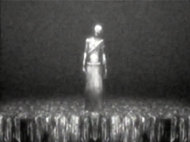
|
|

|
|
 | |
This week, Mutsuki is out of action so me and Rodney will be taking a break from conquering the world using Yu-Gi-Oh cards and instead be trying to scare ourselves senseless.
We'll be looking at the complete Fatal Frame (or Project Zero as it is known in Australia) series all the way from the first game released back in 2001 to the newest on the Wii in 2008. The game hasn't had the success of other survival horror series but what appealed to me most of all is that the game does away with all the gun shooting, pipe bashing you'd see in resident evil and silent hill and genuinely tries to scare you.
So put on your best suit, get in position and line up your shot...
Say Cheese!…
[Rodney] XBOX/PS2: Project Zero (Tecmo)

|
|

|
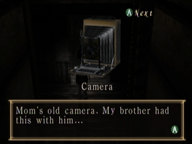
|
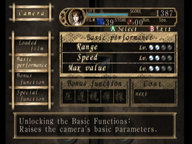
|

|
| OFLC Rating | MA 15+ (Horror Theme) |
| # of Players | 1 |
| Availability | Local: Uncommon |
| Language | English |
Sure, Tecmo is well-known for their games about super-ninjas and cute girls with giant knockers beating the crap outta each other these days but did you know they've also tried making survival horror games that are genuinely scary and not cheap scares that is everywhere in horror movies these days.
Released on the Playstation 2 and later on the Xbox, Project Zero (also known as Fatal Frame in the US or ‘Zero’ in Japan) tells the story of Miku Hinasaki, a girl is searching for her missing brother inside the old, haunted and abandoned Himuro Mansion. Miku has to find a way to get out of the mansion and find her brother at the same time before it's too late.
Graphics are decent, but not outstanding. Although it does an excellent job in recreating that Japanese-Horror movie feel, with the old, grainy film look and the almost lack of colour giving the mansion that old and abandoned look.
Your main weapon in is an old camera with the ability to see the supernatural that your eyes normally cannot see and to exorcise ghosts by taking pictures of them. Your camera's filament turns blue when there are harmless ghosts or clues around you and red if there's a dangerous ghost nearby. The amount of damage you can deal to the ghosts depends on several factors: How close you are to them when you take the picture and your timing in taking certain shots of the ghost.
Taking pictures of ghosts earns you points, which can be used to upgrade your camera and the amount of points you earn can differ depending on what film you use, how and the timing you use for taking pictures. The spare films you find throughout the game serves as your ammunition for the camera and each type of film has different levels of exorcism power. Like most survival-horror games, you will need to conserve the ammo if ever want to stand a chance in beating the game.
Difficulty can range from normal to hard, seeing how most of the ghosts can drain a quarter to half of your maximum health with one hit (some can even kill you instantly) and are able to teleport to attack you from behind. Not to mention that health items can be scarce as well, so you may end reloading your save files continuously just so you can make sure you have the necessary items stocked up for later parts of the game.
Controls in this game can range from annoying to frustrating. With the possible exception of when you're using the Viewfinder Mode (when you're using the camera), your character may seem slow to react to your button inputs and moves quite slow as well even when you're holding down on the run button. Navigating through the environments can get confusing with some of the position of the camera angles making it hard to see certain parts of the area, so you will need to backtrack and explore a lot if you want to find everything you need to progress with the story.
While there's next to no music in this game, the sound effects definitely makes up for it, especially the creepy cries, whispers and moans that happens when you least expects it, making you freeze for a moment thinking “What the hell was that?”, not sure if it was just the game messing with you, or if there's a ghost lurking in the wall waiting to ambush you.
Replay value can vary, mainly because once you finished the game, you will probably know where most of the ghosts are and won't be as scared as before thus losing a bit of its replay value. The game can be finished within 6-8 hours on average depending on whether you explore and searched everywhere or not. Once you do finish the game, you can unlock harder difficulty modes, alternate costumes, or even a battle mode just to have fun blasting ghosts. Also when you start a new game using your clear data, you can carry over the items you have in the previous play through. If you bought the Xbox version, finishing the game in its hardest difficulty will unlock a new exclusive ending.
Project Zero is definitely one of the scariest games out there, it WILL scare you but you will enjoy the whole experience. The only problem I have with the game is how slow it can feel sometimes but I guess it is part of its way to capture the Japanese-Horror movie feel to it. So if you feel like playing a scary game and you've already played Resident Evil or Silent Hill, give Project Zero a try.
One word of advice though, do not play this game in the middle of the night at 3am. I learnt that the hard way.
[Rodney] XBOX/PS2: Project Zero 2: Crimson Butterfly (Tecmo)
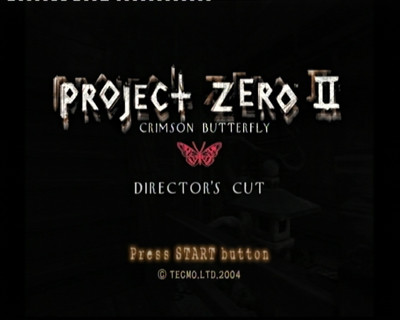
|
|

|
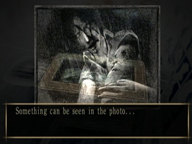
|
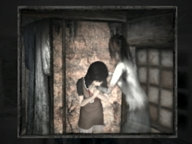
|
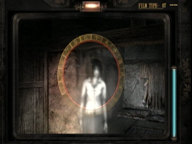
|
| OFLC Rating | M (Horror Themes) |
| # of Players | 1 |
| Availability | Local: Uncommon |
| Language | English |
So you survived Project Zero? And you still want more? Well, Tecmo answered that call with the release of Project Zero 2: Crimson Butterfly for the Playstation 2 with a Director's Cut edition for the Xbox.
This time, the story is about twin sisters named Mio and Mayu Amakura. They're visiting an old area in the woods where they used play together as children, which will soon be destroyed by the construction of a dam. As Mio reminisces on the past, Mayu sees a crimson butterfly fluttering into the forest nearby and follows it. When Mio realizes that Mayu's gone, she searches for her, eventually leading Mio deep into the forest as the sky suddenly turns black and the surroundings shrouded in fog. Finally catching up with Mayu, they discover that they've arrived in the “Lost Village,” which was rumoured to have mysteriously vanished some time ago. Mio's main goal is to escape the village with her twin sister but of course, someone or something has other plans.
Besides from some slight improvements, the graphics look more or less like the first game, there is still little to no colour, giving the entire village the old, mysterious and abandoned look. The grainy old film look is still there as well to give the authentic feel of a Japanese-horror movie.
You will spend most of the game playing as Mio, searching for her sister Mayu and for a way to get out of the village and once again your main weapon is a ghost-exorcising Camera Obscura. This camera aspect is similar to the first game with the whole ‘taking pictures of ghosts to defeat them’ gameplay but with some minor tweaking to make fighting ghosts a little bit less troublesome such as by being able to chain combo your shots on a ghost to cause more damage to them.
Your camera still uses points (called Spirit Points in this game) that you collected from defeating ghosts for upgrades but the they also serve another important purpose in the Xbox version that I will explain later on.
There is still minimal music for this game, but the game has an abundance of sound effects designed to scare the living hell out of you. Another feature that's on this game's excellent sound department is that during the game you find a Spirit Stone Radio and all kinds of gemstones. You put these stones into the radio and you can hear the disembodied thoughts of the dead inhabitants of the lost village, providing you with clues or insights of what to do next or finding out what's the cause of the disappearance of the village. Just listening to the voices in the radio further adds to the creepy factor and send shivers down your spine.
The difficulty of Project Zero 2 is both easier and harder at the same time. You can now toggle on or off a map on the screen so you don't have to pause the game and look at the map so you don't get lost as much. There are more healing items and films to find here so you don't have to worry as much about conserving them but on the other hand there are more dangerous ghosts to fight here (yes, this game also has its share of ghost that can kill you with one hit). If you're playing the Xbox version, there's another harder ‘Fatal’ mode where the game will seriously test your skills, courage and patience.
As I mentioned before, the Xbox version of Project Zero 2 is the Director's Cut edition which has several features that makes it superior to the PS2 version.
Remember how sluggish and annoying it can get to move your characters around in the first game? Well, it's still like that in the sequel but you can now choose to play the game in its FPS Mode where the entire game is played in a first-person perspective with controls similar to other FPS games on the Xbox (e.g. Halo) making it easier to navigate through the environments here.
Although to some people, a little bit of the scariness of the game can be lost but that's objectionable depending on the player. Personally, I find the game scarier in FPS mode because it feels like I am seeing and experiencing everything through Mio's eyes so for example, if a ghost suddenly come out and lunge at me, it does feels a bit like the ghost is actually lunging at me instead.
Replay value is a bit more plentiful this time around. Besides the newly added ‘Fatal’ difficulty mode, you can also unlock Mission Mode and a new Survival Mode. This time around when you start a new game on a game clear data, you gain access to a shop where you can spend your Spirit Points to unlock bonus contents, restock your films, health items and even new upgrades for your camera. Also you can keep the Spirit points you gained during Mission or Survival Mode to use in the shop.
There's also a new Xbox-exclusive ending you can unlock when you finish the game in Fatal Mode.
Personally, I think Project Zero 2 is a superior game and worthy sequel to the first game (especially the Xbox version). It's still hard, scary as hell but slightly less frustrating game to play altogether.
[Zuiko] PS2: Fatal Frame 3: The Tormented (Tecmo)

|
|
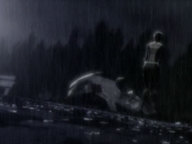
|
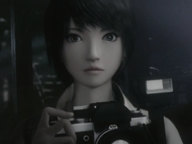
|

|
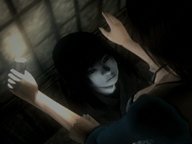
|
| OFLC Rating | MA 15+ (Strong Horror Themes) |
| # of Players | 1 |
| Availability | Local: Uncommon |
| Language | English |
Following on from 2003's Fatal Frame 2, Tecmo has produced a sequel which sets to tie the first two games together all while introducing a new story with a new lead character. Released in 2005, this time it's exclusive to the Playstation 2 with a couple of improvements over the previous games. But is it developed properly or is the frame too out of focus?
The game sets you in the role of Rei Kurosawa, a 23 year old freelance photographer who has recently lost her fiancée Yuu in a car accident. While on an assignment to take pictures of a supposedly Haunted Manor with her assistant, Miku Hinasaki from the first game, she witnesses her dead fiancée in a hallway after taking a photo of it. Ending up in a day dream about an old snowy manor, a woman completely covered in tattoos appears and eventually touches Rei on her shoulder placing a curse on her. Unfortunately for Rei, that's not the end of it, as since that day she's been having repeated nightmares and the curse from the dream has begun to creep into her normal life as strange bruise has also been spreading from the place the tattooed woman touched.
Along the way, you'll also meet Kei Deguchi who is Mio's Uncle from the second game and a friend of Yuu. He has also become involved in the curse along with Rei's assistant Miku. The story has the same staples you've come to expect from the previous two games concerning a haunted mansion with a sinister curse deriving from the occult. A new variation to how the story is played out how the narrative switches between the real and dream world in which later the line starts to blur as you progress. The only issue here is that there isn't a constant narrative as the all the tension that gets built up during a trip into the dream world gets diminished as you realized that you are now “safe” back in the real world and this really hurts the experience.
The other switch up is being able to use other characters and seeing their role in the story as both Miku and Kei have very unique back stories which gets revealed piece by piece as play through the game and having the added characters helps to give more insight to the secrets behind the mysteries.
Played out in “hours”, the plot has a slow pacing to it with a very linear path that you take as you'll mostly be switching back and forth from real to dream world with the majority of time spent navigating the insides of the mansion from here to there triggering cutscenes. The story spans over 14 hours and you'll have about a good 8 hour play time from it with the extra unlockables stretching that out even further.
As with the previous titles, the game revolves around using the Camera Obscura to allow the user to capture spirits onto film which in effect hurts them. The majority of the game is spent navigating through the remains of the rickety old mansion and solving simple challenges and puzzles.
The new interesting addition to gameplay is the ability to play as two other characters during the course of the story. All characters have abilities which are specific to them. Rei has a flash ability that allows her to scare off spirits but its use is limited. Miku utilizes a charm that allows her to slow down the movement of spirits and an ability that allows her to quickly charge the camera twice in a row. Kei has better upper body strength allowing him to move book cases and obstacles. Kei's camera however, lacks the power that Miku and Rei's does which requires him using hide ability to escape certain spirits. These switch ups during the course of the story really help diversify the game and in effect allows you to try new things without making it seem like you're doing the same repeated actions for the past 2 games.
The mansion itself is presented as a mash up of Himuro mansion from the first game and completely new areas. The result is a much bigger mansion with more different locales, as this takes place in a dream, the maze like and seemly strange architecture is much more forgiven especially the appearance of sections from Himuro mansion.
Once you've beaten the game, there is very little incentive to go back to the story unless you would like to unlock various outfits, random upgrades to your camera or just beat the game on a higher difficulty. There is a mission mode though, that unlocks after you first beat the game consisting of 25 missions which unlock even more additional outfits. Otherwise, if this doesn't sound appealing to you, then you won't find anything else to hook you back in.
Visually, the graphics looks better than the first 2 games but there still isn't much that is improved. While the ghosts still look as they did in the previous game, the character models look improved with more detail. The locale is one aspect that really shines in this game as the mannor is beautifully crafted with many winding paths.
On the sound front, you'll still hear the excellent creaks and moans from the ghosts and also the ambience from the houses. The series has always made very good use of sound and it still shows here, you'll find the screeching of the viewfinder get loud and louder as you line up your shot and also sounds of the environment around you. One big issue here that wasn't originally present in the Japanese version is the voice acting. The English audio does a decent job but sounds like it was recorded in a hollow tube.
If you fell in love with the first 2 games, you definitely can't miss this one. The new characters and added mechanics gives another reason to play this game but if you didn't like the previous titles then this one won't do anything to hook you in. Though this game was released here, it will definitely be hard to track down a brand new copy and you may need to resort to finding it used at your local game shop.
[Zuiko] Wii: Fatal Frame 4 (Tecmo/Grasshopper Manufacture)

|
|

|
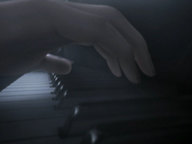
|
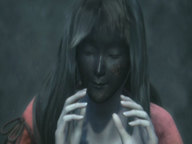
|

|
| Probable Rating | MA 15+ (Horror Themes) |
| # of Players | 1 |
| Availability | Import: Common |
| Language | Japanese |
| Fluency/Literacy Level | Intermediate |
After 3 games on both the Playstation and Xbox, the Fatal Frame franchise is finally hitting Nintendo's hit console. Co developed with Tecmo and Grasshopper Manufacture and published by Nintendo for the Wii in 2008, the game brings with it a completely new control scheme along with a completely brand new story. But does it still deliver the scare factor?
The premise this time revolves around an old treatment center located on Rougetsu Island where, 10 years prior, 5 girls were kidnapped from their rooms by a serial killer. They were later rescued by a detective in pursuit of the criminal. Years later, two of the 5 victims die mysteriously and the rest of the survivors revisit the island to rekindle their lost memories and uncover the truth about what happened. The detective now a private investigater, Choushiro Kirishima also ventures onto the island at a request from Ruka's Mother to bring the 3 girls back.
The story is told from several perspectives of the 4 main playable characters and hence the story progression is more familiar to the style of the previous game. This time however, you don't have the “safe house” to go back to as you did in the third game giving a more constant flow to the story without too much down time. The story itself is still full of surprise twists and turns as you uncover the back stories of all the characters as well as the whole story surrounding the “curse” that is inflicted upon you. The pacing of the narrative is still slow and chapters seem to stretch a bit longer than they were in the previous games.
As with the previous games, the core mechanics of fatal frame lies in using the Camera Obscura to capture spirits onto film which allows you to essentially hurt them. While that is the same with all the games, there are new additions that separate this title from the others. New mechanics introduced in this game include the new Stone Spirit flashlight that allows Choushiro to blast spirit power at spirits and hurting them in the process which is the first non-camera weapon to be used in the series. Also new is the normal flashlight which acts as an item locator where items in the game won't show themselves until you shine your light on them. An item filament appears on the bottom right corner of the screen and players must use this to location any items in the immediate area.
The transition to the Wii obviously brought about another big change to the series and that obviously stems from the functionality of using the Wii Remote. You control your character using the Nunchuck to move while using the Wii remote's motion control to point your flashlight. You can do a 180 turn by shaking the nunchuck and run using the Z Button while your weapon is assigned to the B button and triggered by pressing the A button.
The absence of IR certainly has sparked debate but we found that the motion controls aren't that bad and the only issue with it is that there is a small lag trying to position your flashlight or camera to the correct spot. Other than that, the controls work alright and isn't that much of an issue except in camera mode where you control your viewfinder by tilting the Wii remote which isn't all that easy.
Unfortunately not all games are perfect, and this one certainly has some serious issues. These come from known game breaking glitches which Nintendo itself has acknowledged. However this can be avoided by performing a task first before opening a certain door and Nintendo has more information about this on its website.
Once you've beaten the main story, you'll be able to unlock mission mode which allows you to take certain conditions and beat them within a time limit. Beating missions and earning high ranks allows you to unlock alternate costumes and accessories for the characters and also a character gallery. There are also new functions and lens for the camera which you can unlock by playing through the story multiple times and on new difficulties bringing your upgraded camera into each one.
Looking at the presentation, the game has improved visually and it certainly shows as spirits look much better and the addition of widescreen support and 480p gives the visuals a much needed polish. The issue though, is that the frame rate chugs at certain times and especially when opening doors or walking down hallways. The developers still hasn't lost their touch with the audio as you'll still get the all the same spooky sounds you've come to expect from the series from the echoes from the many vacant hallways or the simple sounds of your footsteps on the creaky wooden floors.
In the end, Fatal Frame IV: Mask of the Lunar Eclipse, is a worthy successor to the franchise and the fact that it's not going to get localized anytime soon is baffling. The Wii is desperately in need of games like this and not being localized given the releases of the previous titles is a travesty. The motion controls may turn some away but the engaging story and emotional terror the game inflicts on you is definitely something that is very unique and different to other the “run and gun” survival horror games.
For those interested in importing this title, be warned, you'll need a Japanese Wii to play this title and to fully understand the entire story and items such as newspaper articles you pick up will require a decent knowledge of Japanese.
Case Closed
Next week we'll be looking at some Turn-based Strategies and other war related games.
this article has been modified since it was originally posted; see change history